Posted by Monty
Today I am a bit sore. Yesterday was The Project.
I speak, of course, of all things regarding the head. On a sailboat, this is where you dispose of your previous drink or meal. On land, this is a pretty straightforward chore. Just operate a lever and let a couple of gallons of water and gravity do the rest, taking the problem sometimes miles away to your local water treatment station where it is purified and released into the environment. On a boat, the process is a little more complicated. First of all, on Sea Bird, the process begins below sea level. The waste products have to be pumped through a series of hoses and anti siphon valves to a holding tank. At your house, the water to flush comes from the same source your drinking water does. On Sea Bird, fresh water is much too precious to be used for such a chore, so sea water is pumped from the ocean to accomplish the task. The whole process is a manual one and actually requires (a little) training to perfect, as the end of the road is not a water treatment plant, but a holding tank. Eighteen gallons is not very much room. Think of just over three five gallon buckets, and you can begin to see the importance of minimizing unnecessary additional seawater in the mix.
A side effect of this is that the mixture becomes... concentrated. This causes several problems, one being the hoses used to transport the mixture from one place to another. While modern hose and materials are much improved over years past, eventually, odors will permeate the walls of the hose. On Sea Bird, there is a lot of hose to permeate (over 30 feet!) and it is almost all under the forward v-berth. Because the boat was sitting unused for a period of time before we bought it, there was no odor at first. The more we lived on the boat, however, the more... noticeable... the problem got. So yesterday, we changed the hoses.
I speak, of course, of all things regarding the head. On a sailboat, this is where you dispose of your previous drink or meal. On land, this is a pretty straightforward chore. Just operate a lever and let a couple of gallons of water and gravity do the rest, taking the problem sometimes miles away to your local water treatment station where it is purified and released into the environment. On a boat, the process is a little more complicated. First of all, on Sea Bird, the process begins below sea level. The waste products have to be pumped through a series of hoses and anti siphon valves to a holding tank. At your house, the water to flush comes from the same source your drinking water does. On Sea Bird, fresh water is much too precious to be used for such a chore, so sea water is pumped from the ocean to accomplish the task. The whole process is a manual one and actually requires (a little) training to perfect, as the end of the road is not a water treatment plant, but a holding tank. Eighteen gallons is not very much room. Think of just over three five gallon buckets, and you can begin to see the importance of minimizing unnecessary additional seawater in the mix.
A side effect of this is that the mixture becomes... concentrated. This causes several problems, one being the hoses used to transport the mixture from one place to another. While modern hose and materials are much improved over years past, eventually, odors will permeate the walls of the hose. On Sea Bird, there is a lot of hose to permeate (over 30 feet!) and it is almost all under the forward v-berth. Because the boat was sitting unused for a period of time before we bought it, there was no odor at first. The more we lived on the boat, however, the more... noticeable... the problem got. So yesterday, we changed the hoses.
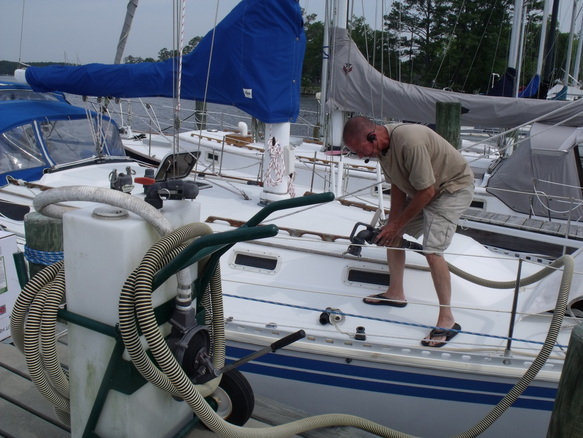
The first step was to get as much of the nasty stuff out of the boat as possible. This is the portable pump out station at the dock.
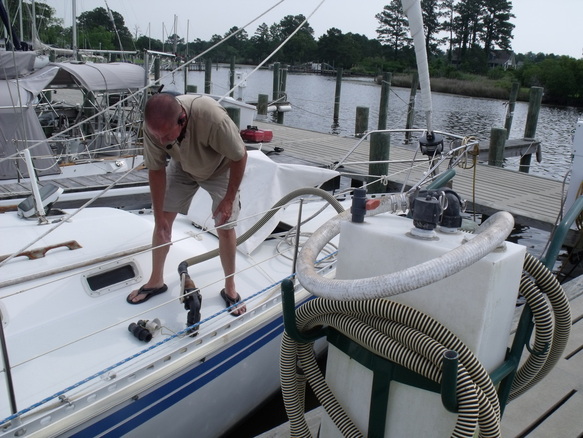
It's manually operated, and holds about 40 gallons. Pump out, fill the toilet with fresh water and Clorox, pump that into the holding tank, pump that into the pump out tank, and repeat until full. Then wheel the tank down the dock and pump it into the local sewer system. Then repeat. And again. And again. Remember, we are going to be disconnecting hoses. You want whatever is left in the hoses to be as clean as possible, as it will probably be spilled into the bottom of the boat.
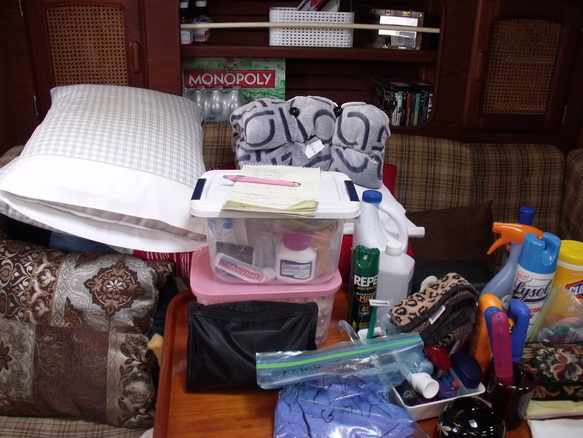
Then take everything and move it somewhere else. Clambake was not impressed.
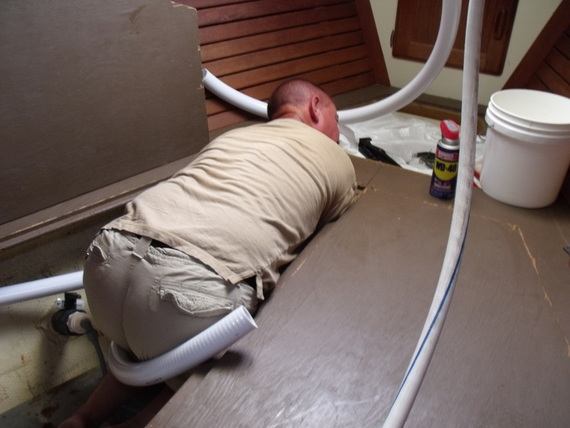
Then just remove and replace.
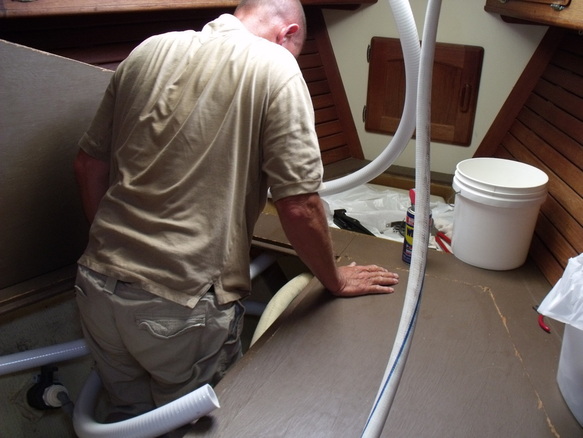
Not really easy working on your knees on top of a stainless steel freshwater tank.
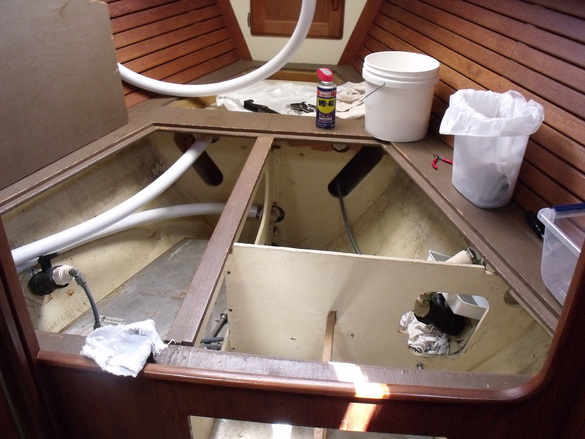
But eventually, progress was made. This is about the halfway point.
We got the system buttoned up and Carol went to work with spray bottle and Clorox. After a good rinse we went down to Paradise Cove for some libations while the chlorine cloud dissipated. After dinner in Oriental, we returned and put the boat back together, finishing up at about 10:00 last night.
And this morning...no smell!
We are still waiting for the shoe to drop, but after a complete day it has been concluded that the smell is either gone or has been greatly reduced, and Carol has declared this to be good. So thanks, Wanda. Without you we would never have met Spence. And without Spence's friend, Matt, who made the suggestion, we would have had to do a lot more research before we came to the conclusion we did. So good job there.
And this morning...no smell!
We are still waiting for the shoe to drop, but after a complete day it has been concluded that the smell is either gone or has been greatly reduced, and Carol has declared this to be good. So thanks, Wanda. Without you we would never have met Spence. And without Spence's friend, Matt, who made the suggestion, we would have had to do a lot more research before we came to the conclusion we did. So good job there.